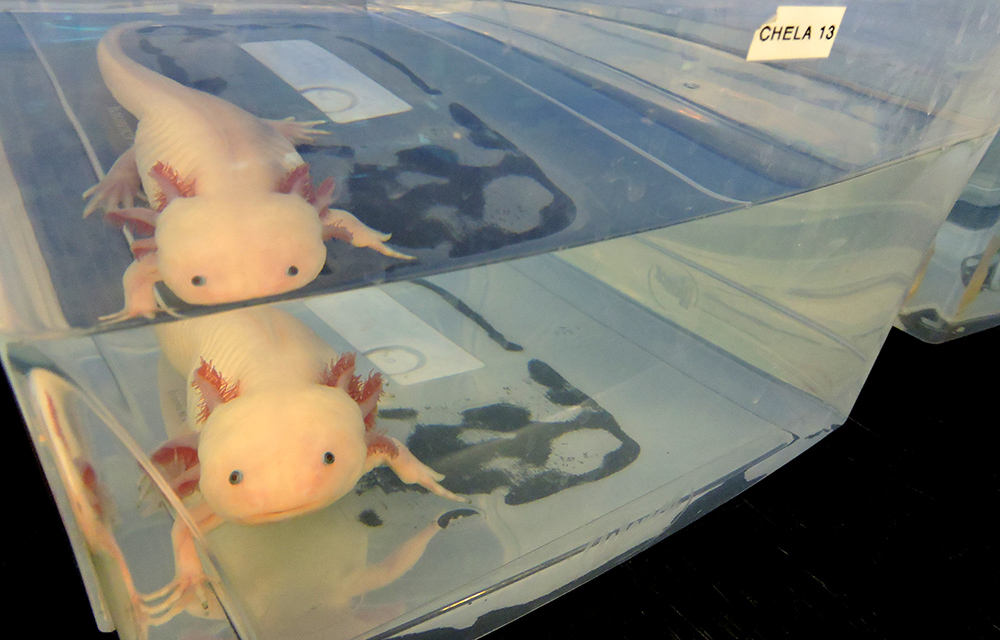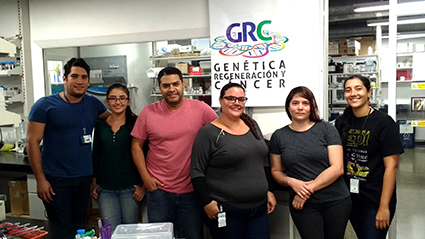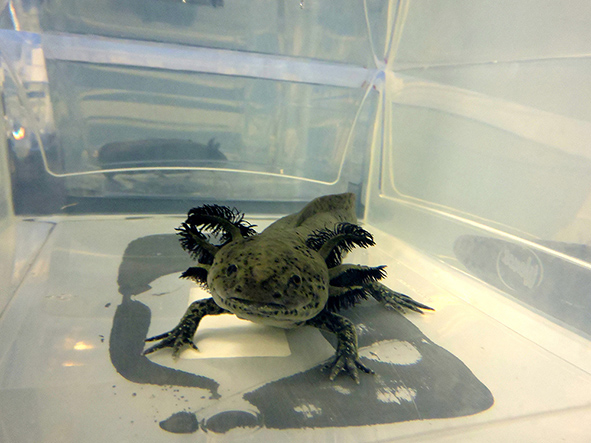Z7_89C21A40L06460A6P4572G3JN0
 Inglés UdeA - Cabezote - WCV(JSR 286)
Inglés UdeA - Cabezote - WCV(JSR 286)
Z7_NQ5E12C0L8BI6063J9FRJC1MV4
 Signpost
Signpost
Portal U de A
Z7_89C21A40L06460A6P4572G3JQ1
 Salamanders could shed light on limb regeneration
Salamanders could shed light on limb regeneration
Z7_89C21A40L06460A6P4572G3JQ3
 Portal U de A - Redes Sociales - WCV(JSR 286)
Portal U de A - Redes Sociales - WCV(JSR 286)
Z7_89C21A40L0SI60A65EKGKV1K57




 For over 16 years, Professor Jean Paul Delgado, a researcher at the UdeA Genetics, Regeneration and Cancer Research Group, has conducted research on the regenerative capacity of amphibians. A team of researchers led by Professor Delgado, is conducting a study to identify the genes responsible for regenerative processes in salamanders, learn why these genes are not present in mammals, and how humans could eventually regrow body parts.
For over 16 years, Professor Jean Paul Delgado, a researcher at the UdeA Genetics, Regeneration and Cancer Research Group, has conducted research on the regenerative capacity of amphibians. A team of researchers led by Professor Delgado, is conducting a study to identify the genes responsible for regenerative processes in salamanders, learn why these genes are not present in mammals, and how humans could eventually regrow body parts. In 2014, UdeA researchers obtained a colony of axolotls via the Ambystoma Genetic Stock Center (AGSC) at the University of Kentucky, a genetic stock center dedicated to the supply of genetically well-characterized axolotl embryos, larvae, and adults to laboratories and classrooms throughout the United States and abroad. AGSC encouraged UdeA researchers to develop programs aimed at maintaining the genetic characteristics of this species. “To date, Universidad de Antioquia is the only university in Latin America that investigates the molecular and cellular biology of these amphibians,” Professor Delgado said.
In 2014, UdeA researchers obtained a colony of axolotls via the Ambystoma Genetic Stock Center (AGSC) at the University of Kentucky, a genetic stock center dedicated to the supply of genetically well-characterized axolotl embryos, larvae, and adults to laboratories and classrooms throughout the United States and abroad. AGSC encouraged UdeA researchers to develop programs aimed at maintaining the genetic characteristics of this species. “To date, Universidad de Antioquia is the only university in Latin America that investigates the molecular and cellular biology of these amphibians,” Professor Delgado said.